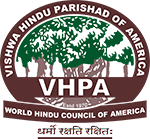Western news media seems to act in tandem in its unfair coverage of Hindus, Hinduism, and India. News outlets like the New York Times, Washington Times, Times Magazine, CNN, and NPR, among others, seem to go out of their way to portray Hindus in a bad light. Even more tragic is that any counterarguments put forth by the Hindu community are routinely ignored.
In this article, we document two instances where letters to two well-known media houses, The Washington Post and The Wall Street Journal, have gone unanswered. In both cases, the said news outlets had published articles that were not only damaging to the Hindu cause but were also maliciously unfair.
Letter to WSJ – 2/18/2022 Article ‘India’s Hijab Debate” by Sadanand Dhume
Our family has been a loyal WSJ customer for many years due to the high professional standards that your journal holds in an increasingly unhinged world of journalism.
I have to, however, express regret and frustration that your editorial article titled “India’s Hijab Debate”, by Sadanand Dhume (2/18/2022) did not meet my expectations for research, intelligent analysis, and presentation of truth. Below I provide some details for my argument:
- The article does not provide readers with an important piece of context that almost all schools and junior colleges in India have always required students to wear a uniform so kids feel equal to their peers. Now, the scope of this so-called debate is only limited to this code of uniforms. Can schools require kids to dress up in uniforms, or can each sect, religion, or cult now ask for exceptions – that, and just that, is the topic? The article, however, sensationalizes this and suggests that this debate is about (Muslim) women’s right to dress in a hijab in any public place. If you do some research, you will find that enforcing a dressing standard has never been a topic of any serious debate/discourse in that country. Unlike many Western nations where seeing a woman in a hijab is a new phenomenon and makes some people uncomfortable, Muslim women have worn a hijab in India for centuries, and so it is not a new or controversial thing there.
- As noted in the article, 15 EU countries backed by the EU Human Rights Court have completely banned the wearing of hijab in public places. Yet, I have never seen your editorials constantly refer to these governments as far-right or Christian Nationalists – why, then, is the government in India always referred to as Hindu Nationalist? That government hasn’t ever even suggested such draconian laws; you will be hard-pressed to find a single policy of the government that gives Hindus any special privileges over non-Hindus. So I am not sure why there is constant name-calling. Aren’t you not treating predominantly White countries differently than Asian countries? Note that even in this debate, the government is not involved – it is a legal case between a school and some Muslim parents.
- In the editorial, Mr. Dhume has extensively quoted opinions of actors from the Pakistani establishment and Pakistani Americans. I am not sure why he thought Pakistanis were the experts whose views he had to cite in the article – it’s bizarre until you recognize that this is not an unbiased, sincere analysis of an issue but an editorial written to air a specific political agenda. Pakistan has one of the most dismal records when it comes to treating its own minorities – so to ask their opinion on matters dealing with minority rights is both ironic and laughable.
- Most disappointingly, Mr. Dhume missed the real story behind this facade. There are state government elections coming up in key states, and this debate has everything to do with galvanizing votes on religious lines. I would have expected a good editor to have made this connection which is well-known to anyone with connections in India.
You will find these to be true if you do some basic research, and I hope you will advise editors to better research their topics and offer intelligent facts-based analysis instead of airing the same-old political agendas.
Warm Regards,
Hrishikesh Bhagwat, Aliso Viejo
Letter to Editor – Washington Post – March 29, 2022 article: I tried watching ‘The Kashmir Files.’ I left the theater to screams of ‘Go to Pakistan.’ by Global Opinions contributing writer Rana Ayyub
As an American Hindu, I felt disturbed with the article in which an Indian Muslim journalist Rana Ayyub alleged that she could not watch “The Kashmir Files” movie in the theater. Could Ayyub have watched the movie if she did not engage in a verbal altercation? Or could she have expressed few words of support for the forgotten victims of the indigenous Kashmiri-Hindu genocide portrayed in the movie?
Could Ayyub have condemned the Muslim perpetrators who threatened the Kashmiri Hindus to either convert to Islam or be killed? Sadly, over 95% (350,000) of Kashmiri Hindus were killed and their bodies were thrown in the river, or they had to flee leaving all their property and belongings behind to save their lives. Just as Pope Francis has recently apologized to the Indigenous Canadians on behalf of the Catholics. stating “I feel shame — sorrow and shame — for the role” that Catholics played “in the abuses you suffered and in the lack of respect shown for your identity, your culture and even your spiritual values.”
While I applaud the Biden administration for its recent declaration of the Armenian and the Rohingya genocides, I urge him to recognize the repression of the Kashmiri Hindus as a genocide. For more information on the history of the Kashmir conflict. please see: https://www.hinduamerican.org/wpcontent/uploads/2020/01/Kashmir-Conflict-History-brief-HAF.pdf
Sincerely
Geeta Sikand, MA, RDN, FAND, CLS, FNLA, CDEDiplomate, Accreditation Council of Clinical Lipidology
Director of Nutrition: UC Irvine Preventive Cardiology Program
Associate Clinical Professor of Medicine: Cardiology
University of California Irvine College of Medicine







